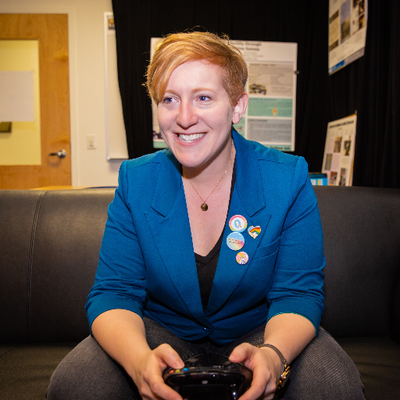Sculpture parks are a mixed bag. The best integrate form and material with environment. The worst plop overly sentimental or corporate-esque art into a preciously bucolic setting. Even Burning Man’s art-filled open playa, which the Artery carefully arrays like a vast, dusty sculpture park, has its stunning moments and its underwhelming ones.
The sculpture park on San Juan Island (between Washington State and British Columbia) offers a sometimes confusing mix of the good and the bad. The setting is calm and sylvan, but from the road the park looks silly at best. Statues of children frolicking with ponies join replica globes hugged by giant hands. However, there are some surprising opportunities for individual exploration, including a number of tiny trails down to the water’s edge. On a rainy, chilly October day, I had the place to myself, so I was all the more struck when I stumbled into a clearing and found Mary Coss‘ installation, “Three Graces.”
The piece consists of three female figures, each about 10′ tall, with nude cast-metal torsos, barbed wire skirts, no heads, and tree branches for spines. They stand in a triangle, with their backs together, each cordoned off by a white rope. If we take their title at its word, they represent “charm, beauty, and creativity.” Since they’re amputated, rusted, and hollow, we might want to look for some less graceful interpretations.
The circle of figures, almost a memorial, gives off a number of eerie impressions. They women seem simultaneously like ghosts, like once beautiful statues eroded by age, like female Christs at their crosses, or even like the bodily remains of a witch burning. The white safety rope, while inelegant, actually creates some interesting tension of its own: it becomes crime-scene chalk marks, the boundaries of magic circles, the edges of graves we’re peering into, platforms for an execution, or just a reminder that the art in front of us (which tempts us to reach out and touch its barbed wire) is dangerous.
Coss’ use of materials is really fascinating. You can see here that the skirts (or are they lower bodies with overly pronounced hips, or flames, or upward rushes of water?) are made from two types of barbed wire interwoven to make almost comically comely stripes — turning “female” arts like sewing and fashion into something gnarled and cruel. She incorporates the environments by using wood for the figures’ back supports; if you look closely, you can see that, because of the damp air, the wood has actually begun to grow fresh moss. Life is slowing creeping in despite the air of death and fracture that surrounds the Graces.
I had troubling finding information through the San Juan Islands Museum of Art, the organization based in Friday Harbor that runs the sculpture garden, but the signage on-site made it seem like the installation was up for all of 2012. I can’t help but think that fall was the best time to see it though: the falling yellow leaves caught in the barbed wire, the cloudy skies bringing out crumpled pocks in the figures’ nipples, the feeling that the Graces were trying (and failing) to cover themselves to keep out the wet and the cold.
“Three Graces” comes with a price tag ($1,700 a piece, $5,000 for the set), but it’s hard to imagine this piece outside its site. As public, urban art in would need to be sturdier, less prickly. In someone’s garden it would be too safe; the female figures would be protected by walls, hedges, each other. Does anybody own a largely uninhabited island?
Mary Coss seems to be largely based in Seattle, but I’d love to see what she would create for the playa, or even for the Black Rock Arts Foundation.



Pingback: Masochistic Encounters with Public Art / Our Glass Lake
Pingback: The Struggle | Mary Coss Studio